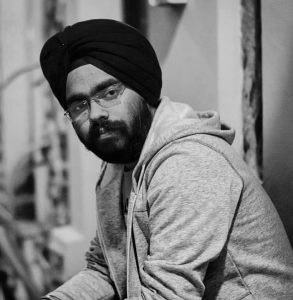Inclusive Public Parks for Cross-cultural Community Participation | Japjot Singh
Foreword
Hello everyone, welcome to my exhibit on creating Inclusive Public Parks (IPP) for cross-cultural community participation. This exhibit is meant for every individual who uses or wishes to use public green spaces and wants to understand how incorporating various cultures in the design process is crucial for developing such urban green spaces.
Parks are the places which can be used as a bridge between different communities if they respond to the needs of visitors from diverse cultural groups and be designed and managed with people from different social and cultural backgrounds, as well as different user groups in mind. To address this issue of such disconnect between people and public spaces, a people-centered approach has to be used to plan, design, and manage public parks. Placemaking capitalizes on a local community’s assets, inspiration, and potential, with the intention of creating parks that promote people’s health, happiness, and well-being (What Is Placemaking?, 2007).
Introduction
As urban populations rise and density increases, access to quality green spaces (and the mental and physical benefits that accompany them) will continue to diminish for marginalized communities, further widening the disparities in access to parks and public spaces and the accompanying public health implications (Past, Present, Future: Who Gets to Write Urbanism’s next Chapter?, 2020). Identifying the needs of the current and predicted future communities is considered practical and proactive for planners to achieve Inclusive Public Parks. Also, community engagement in the planning and design of green spaces is an important step in understanding these needs as engagement not only encourages community ownership of the open space but may also maximize its use.
In racially, ethnically, and socioeconomically diverse neighborhoods the importance of integrating community voices into park planning needs to be highlighted. Urban parks and green spaces provide various physical, social, environmental, and health benefits improving the quality of life in the urban environment, so it is crucial that urban parks respond to the needs of visitors from diverse cultural groups.
Inclusive parks should foster racial equity and social diversity among its users as it is essential towards utilizing the power of parks to its utmost potential. Various researches have considered racial/ethnic variation in park use, but these studies do not consider whether people across race/ethnicity are interacting in parks. In a research by Lee and Scott, a local community member detailed that many local African Americans had no interest in visiting the Cedar Hill State Park as the park did not do anything to encourage their use of the space and that it was mainly visited by White individuals and was viewed by community members as a “White space” (Lee and Scott, 2016, p. 432). In such spaces, the presence of people of color can be perceived as out of the ordinary, dangerous, or criminal (Public Space, Park Space, and Racialized Space, 2020). Instead of avoiding this friction, creative strategies can be used as parks could act as a bridge between communities to understand each other and strengthen relationships.
Parks and green spaces offer urban residents vital resources and services, hence the participation of park users is necessary in order to utilize the park to its utmost potential. Different communities need to be incorporated in the planning process because local residents are familiar with their locality, cultural values, and knowledge which professional planners may lack (Huang, 2010, p. 555). The communities around the park must act in a partnership with the local authorities responsible for park planning and management to create a collaborative atmosphere where needs of the whole community can be incorporated in the design process excluding no one because if parks are ever going to serve local residents to the best of their ability, policies and plans regarding parks should be made in response to the voices of those residents (Smiley et al., 2016, p. 2).
Next: Making Multicultural Parks ⇒
Meet Japjot Singh
 Japjot Singh
Japjot Singh
Inclusive Spatial Designer
Toronto, Ontario
He/Him
japjot.singh@student.ocadu.ca
Japjot Singh (he/him) is an India-born interior designer. Currently in his second year of the Inclusive Design (M.Des) at OCAD University, he is exploring the untapped potential of public spaces to activate them and enhance their inclusivity.
Japjot has acquired his Bachelors degree in Interior Design from G.D Goenka University, Gurgaon, India in collaboration with Politecnico di Milano, Italy. His experience in designing utility based residential and commercial spaces has lead him to take a leap towards improving the condition of our public spaces as they are in a dire need of an overhaul in terms of how they are designed and managed by the higher authorities.

